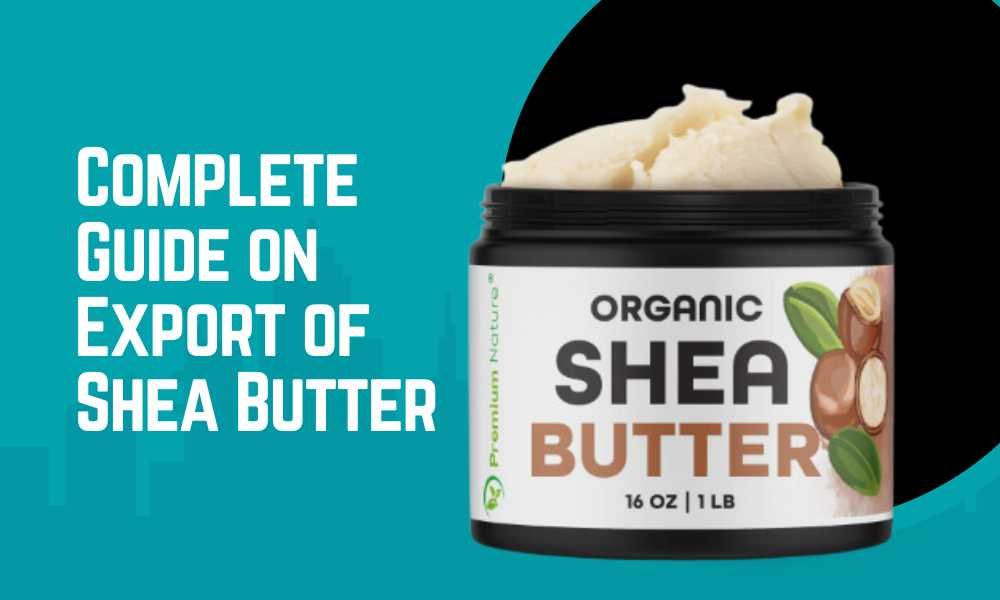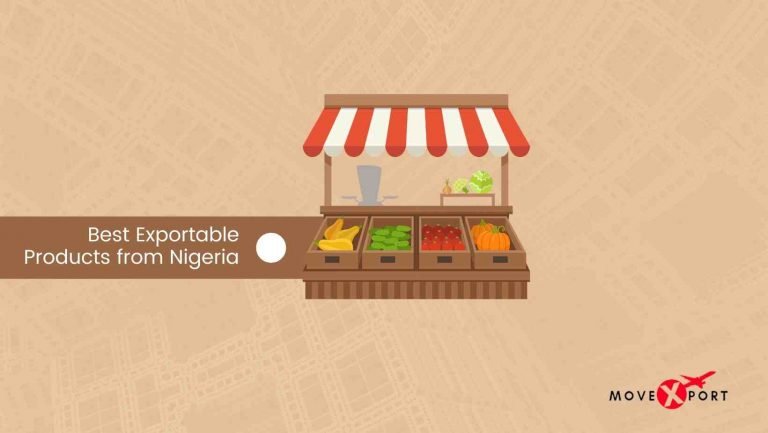Are you interested in exporting shea butter from Nigeria? Look no further! This comprehensive guide will provide you with all the information you need to know about shea butter exports. From understanding the production process to identifying key players in the industry, we’ve got you covered.
Shea butter has a wide range of benefits, from its moisturizing properties to its role in promoting skin health. The demand for shea butter is on the rise, and Nigeria is a major player in its production and exportation.
In this guide, you’ll learn about the shea butter industry and market, as well as legal and regulatory considerations when it comes to exportation. You’ll also discover potential global markets and marketing strategies, financing options, and how to navigate export logistics.
Whether you’re an experienced shea butter exporter or just starting, you’ll find valuable insights to help you succeed in the shea butter export market. So, let’s dive in and explore the exciting world of shea butter exportation from Nigeria.
Understanding Shea Butter Production and Benefits
It’s important you understand the production process to meet the demands of the global market. Shea butter is derived from the nut of the shea tree, which grows in West Africa. In Nigeria, the shea butter industry is rapidly growing because of the country’s favorable climate for shea trees.
Shea Butter Exports: Production Process
The production process of shea butter is divided into five stages: sourcing, cleaning, crushing, roasting, and milling. The nuts are sourced from wild-growing trees or plantations, and then the outer pulp is removed to get the nuts.
These nuts are cleaned, crushed, roasted, and then milled to a smooth paste. The paste is mixed with water and kneaded by hand until the butter floats to the surface. Finally, the butter is collected, purified, and packaged for export.
It is essential to adhere to strict quality control measures during every stage of the production process to ensure that the shea butter meets international standards.
Benefits of Shea Butter
Shea butter is a versatile natural oil with numerous benefits. The high concentration of fatty acids and vitamins makes it a popular ingredient in skincare and hair care products. Its moisturizing properties help to reduce flakiness, inflammation, and redness, soothe dry skin, and increase skin elasticity.
It also contains anti-inflammatory properties which make it ideal for treating minor cuts, skin rashes, and acne. Plus, it improves collagen production, thus reducing wrinkles and fine lines. It’s a valuable resource in the indigenous West African community for its medicinal properties.
In addition to its personal care benefits, shea butter can also be used in the manufacturing of candles, soaps, and even chocolates.
By gaining a deep understanding of the production process and the numerous benefits of shea butter, you can make informed decisions about exportation. Make sure to keep quality control and standards during the production and purchase of the butter.
Exploring the Thriving Shea Butter Industry in Nigeria
Nigeria is the largest producer of shea butter in the world, accounting for almost 60% of the global production. The shea butter industry is a key driver of economic growth in Nigeria, generating employment for millions of people across the value chain.
As a prospective exporter, it is essential to understand the market dynamics and trends in the Nigerian shea butter industry. Shea butter manufacturers and suppliers play a crucial role in ensuring a steady supply of high-quality shea butter for export.
Some of the key players in the Nigerian shea butter industry include the Nigerian Export Promotion Council (NEPC), the Shea Butter Association of Nigeria (SBAN), and the Nigerian Institute for Oil Palm Research (NIFOR).
These organizations work together to promote the shea butter industry and ensure that it remains sustainable and profitable for everyone involved.
Market Dynamics and Opportunities
The demand for shea butter in the international market has been steadily increasing over the years. Europe and North America are the largest importers of shea butter, accounting for more than 75% of the total global imports.
The global shea butter market is indeed expected to grow, with various reports predicting different CAGR rates. For example, Grand View Research estimates a CAGR of 7.1% from 2023 to 2030, while Custom Market Insights projects a CAGR of 8% between 2022 and 2030. Therefore, the market is expected to experience positive growth due to several factors, including:
- Rising demand for natural and organic skincare products, as you mentioned.
- Increasing awareness of shea butter’s health and beauty benefits.
- Growing disposable income in developing countries.

Shea Butter Market
Industry Challenges and Innovations
Like any other industry, the Nigerian shea butter industry faces several challenges that can affect the production and export of shea butter. Some of the common challenges include poor infrastructure, lack of access to finance, and inadequate implementation of regulatory policies.
However, the industry has also witnessed several innovations and advancements in technology that have helped to address these challenges. For instance, the use of modern processing equipment and packaging techniques has greatly improved the quality of shea butter and reduced post-harvest losses.
In summary, the Nigerian shea butter industry is a vibrant and growing sector that presents numerous opportunities for exporters. To succeed in this market, it is important to understand the market dynamics, key players, and challenges facing the industry.
Legal and Regulatory Considerations for Exporting Shea Butter from Nigeria
If you’re planning to export shea butter from Nigeria, it’s crucial to familiarize yourself with the legal and regulatory requirements. The exportation of shea butter is regulated by governmental bodies such as the Nigerian Export Promotion Council (NEPC) and the Standards Organisation of Nigeria (SON).
To ensure you meet the requirements, you’ll need to obtain the necessary permits and documentation, such as the NEPC Certificate of Incorporation and the SONCAP Certificate. It’s also important to note that shea butter is classified as a non-oil export and exporters are eligible for certain incentives, including export credit guarantees, tax exemptions, and waivers.
Exporters must comply with international trade regulations, such as the Harmonized System (HS) codes and the International Standard for Phytosanitary Measures (ISPM). These codes and standards ensure that the shea butter meets quality standards and is safe for export.
Understanding the legal and regulatory considerations for shea butter exportation is critical to navigating the export process. Be sure to research and comply with all requirements to ensure a smooth journey from Nigeria to international markets.
Finding Global Markets for Shea Butter Export
As a shea butter exporter, understanding the demand for shea butter in different regions is crucial. The global shea butter market continues to grow, and international buyers are always on the lookout for high-quality Nigerian shea butter.
To tap into the lucrative export markets, it is essential to identify potential international buyers and understand their requirements. Conduct market research to gain insights into different market segments and buyer preferences. This will help develop targeted marketing and branding strategies that align with local consumer demand.
Network and build relationships with potential buyers by attending trade fairs and other industry events. This provides opportunities to showcase your shea butter products and connect with international buyers seeking to source high-quality shea butter from Nigeria.
Ultimately, by keeping an eye on the latest trends and identifying potential buyers, Nigerian shea butter exporters can explore and tap into new and lucrative export markets.
Quality Control and Packaging for Exporting Shea Butter from Nigeria
When it comes to exporting shea butter from Nigeria, quality control and proper packaging are critical to ensure your product arrives at its destination in optimal condition. Quality control measures guarantee that your shea butter meets international standards and regulations, while appropriate packaging ensures the butter arrives intact and free from contamination.
Shea Butter Export: Quality Control
Implementing quality control measures helps to ensure your shea butter meets the expected quality and safety standards required for export. As a shea butter exporter, it is your responsibility to conduct routine checks throughout the production process. This includes verifying the quality of the nuts, verifying the processing stages, and examining the final product. You may consider obtaining a quality control certificate to help with your export challenges and establish credibility with international buyers. Remember, successful exporting requires quality products, so prioritize quality in every step of the process.
Packaging for Export
The packaging of your shea butter is another crucial element that directly affects product quality. It should keep the butter free from contamination and prevent damage during transit. The packaging must be sturdy enough to withstand the rigors of international shipping. It is essential to choose the right packaging material, and labeling must be done correctly. Labels must contain critical information describing the product, such as ingredients, weight, and manufacturing facility’s details. Using barcoding techniques can help to minimize any errors prone to manual handling.
In conclusion, implementing quality control measures and choosing appropriate packaging material are crucial to ensure successful exporting of shea butter from Nigeria. By following these strategies, you will be providing consumers with high-quality shea butter while building a good reputation with international buyers.
Export Logistics and Shipping Considerations
Exporting shea butter can be a complex process involving a range of logistical considerations. To ensure a streamlined export process, it is important to gain insights into transportation options, documentation, and customs procedures. Here are some key shea butter export logistics and shipping considerations to keep in mind:
Transportation Options
Transporting shea butter requires careful planning and coordination. You can choose between air, sea, or land transport depending on your budget, volume, and destination. Air freight is the quickest option but can be more expensive, while sea freight is more affordable but may take longer to arrive at its destination. Land transport is a viable alternative for destinations within Nigeria and neighbouring countries.
Documentation
To transport shea butter overseas, you will need to comply with all relevant documentation requirements. This includes export permits, purchase orders, bills of lading, and customs declarations. You should also be aware of any additional documentation requirements specific to your destination country, such as import permits and phytosanitary certificates.
Customs Procedures
Customs procedures can vary considerably from country to country, and failure to comply with regulations can result in significant delays and penalties. It is important to work with a reputable freight forwarding company that has experience in shea butter export logistics and can help you navigate the customs clearance process in your destination country.
By carefully managing your export logistics and shipping considerations, you can ensure a smooth and successful shea butter export process from Nigeria.
Financing and Funding Options for Exporting Shea Butter
When venturing into the shea butter export business, finding the necessary funds to finance your operations is critical to ensure your success. Various financing and funding options are available to support your export business.
Government Assistance Programs
You can explore government assistance programs to access funding for your shea butter export business. Programs such as the Agricultural Credit Guarantee Scheme Fund (ACGSF) and the Export Expansion Grant Scheme (EEGS) provide funding for SMEs in the agricultural sector and non-oil exports.
Export Financing Institutions
Export financing institutions such as the Nigerian Export-Import Bank (NEXIM) provide export credit facilities to Nigerian exporters. These facilities include pre-shipment credit, post-shipment credit, and export contract finance to support the export of non-oil products, such as shea butter.
Private Funding Sources
You can also explore private funding sources such as venture capital firms, angel investors, and crowdfunding platforms. Ensure you have a solid business plan and pitch deck to attract potential investors.
Overall, explore all funding options available for exporting shea butter from Nigeria. With sufficient financing and funding, you can successfully finance your operations and achieve success in the global market.
Marketing and Branding Strategies to Promote Your Shea Butter
To sell your high-quality Nigerian shea butter to global customers, effective marketing and branding strategies are vital. The competition is intense, so you need to create a strong brand identity and utilize digital marketing channels to stand out. Here are some expert pointers to help develop winning marketing and branding strategies.
1. Create a Unique Brand Identity:
Develop a distinctive brand identity for your shea butter that sets it apart from the rest. Use a memorable logo, eye-catching packaging, and clear messaging that highlights the benefits, quality, and authenticity of your product.
2. Use Social Media for Promotion:
Utilize social media platforms such as Twitter, Facebook, and Instagram to promote your shea butter. Create accounts and pages that showcase your brand, share exciting updates, customer feedback, and photos. Keep your social media pages active and engaging.
3. Use Influencer Marketing:
Collaborate with popular social media influencers and bloggers who cater to health and skincare niches. They can provide you with exposure to their huge followers and endorse your shea butter in return for high-quality products and other incentives.
4. Attend Trade Fairs and Conferences:
Participate in trade fairs, exhibitions, and events related to beauty, skincare, and health. Display your products, create brochures, and network with prospective wholesale buyers, distributors and other industry players to expand your customer base.
5. Leverage E-commerce Platforms:
Build an e-commerce website or partner with established online marketplaces, such as Amazon or Etsy. Utilize search engine optimization techniques to put your products in front of more customers who are searching for shea butter or organic skincare products.
With these marketing and branding strategies in place, you will be able to promote your shea butter successfully to global buyers and grow your business exponentially.
Overcoming challenges in Shea Butter exportation
Exporting Shea butter from Nigeria offers a plethora of opportunities, but it also comes with having to navigate various challenges. These hurdles can range from regulatory policies to stiff market competition. In this section, we will identify the common challenges that Shea butter exporters face and provide strategies to overcome them.
Challenges in Shea Butter Export
- Regulatory Policies: The Shea butter export market is regulated by the Nigerian government’s policies. These regulatory policies can be cumbersome, delaying and intimidating, making it difficult for exporters to trade efficiently.
- Market Competition: To thrive in the global market, exporters of Shea butter must contend with other producers from Africa, Asia, and South America. This competition requires shea butter exporters to formulate strategies that differentiate their products.
- Quality Management: Consistent quality is essential for any product, especially Shea butter to remain competitive in the global market. However, maintaining consistent quality requires the exporter to have good management, quality control systems, and adaptability to meet the customer’s needs.
- Transportation: Transportation and logistics can be a nightmare for first-time exporters, with pitfalls such as delayed shipments or damage to products in transit. Exporters, therefore, need to plan carefully for transportation by selecting reliable partners and choosing appropriate packaging.
- Payment: Payment is one of the critical aspects of trade transactions. Exporters must be wary of fraudulent practices and carefully manage payment guarantees, negotiations, and risks to secure their payments from international buyers.
Strategies For Overcoming Hurdles
- Find a reputable Nigerian-based agent to help navigate regulatory policies efficiently.
- Identify unique selling points and target niche markets to differentiate from competitors.
- Establish quality control systems that follow international standards, including HACCP and ISO.
- Partner with reliable transportation companies that have experience with exporting Shea butter.
- Ensure secure payment practices such as mutually agreed contractual terms and using an escrow service for transactions.
Exporting Shea Butter from Nigeria is a profitable venture but can be challenging. By understanding these common challenges and adopting strategies to overcome them, you can succeed in the global market.
Specific Examples/Case Studies
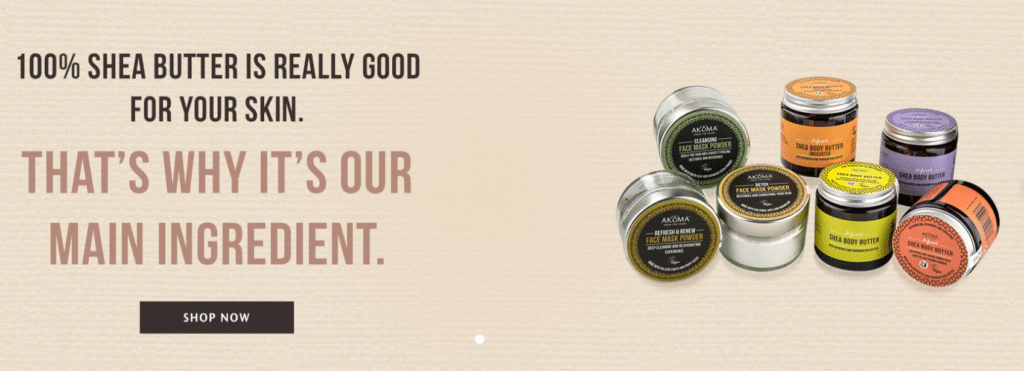
Akoma Int’l UK Ltd
This company is based in the UK and specializes in sourcing and exporting organic and fair trade shea butter from Ghana. They work directly with women’s cooperatives in Ghana to ensure a sustainable and ethical supply chain. Akoma International has been successful in exporting shea butter to various international markets, including the UK, US, and Europe.
This company is based in Ghana and is a leading exporter of shea butter products. They have established strong partnerships with local women’s cooperatives and have invested in modern processing facilities to ensure high-quality shea butter products. The Savannah Fruits Company has successfully exported shea butter to markets in the US, Europe, and Asia.
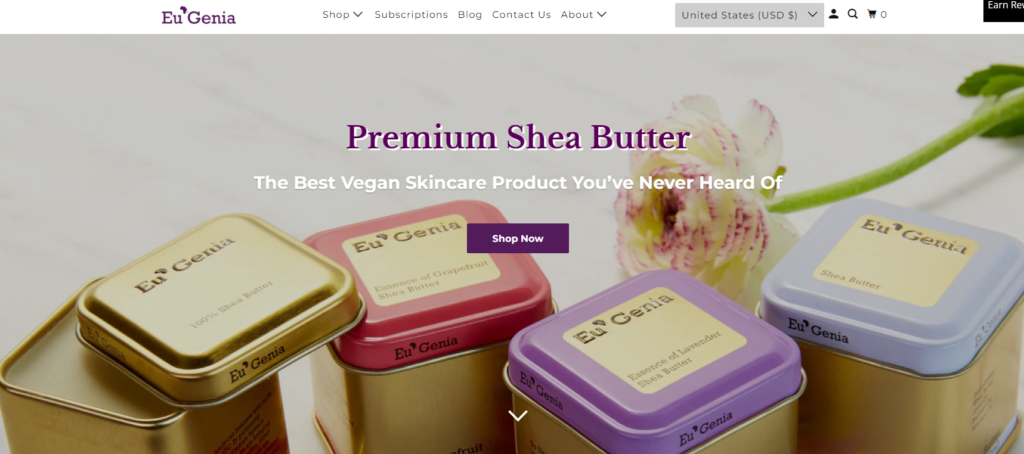
Eu Genia Shea
This US-based company was founded by a mother-daughter team who source their shea butter from their family-owned farm in Ghana. They have successfully built a brand around their high-quality shea butter products and have expanded their export market to include countries in Europe and Asia.
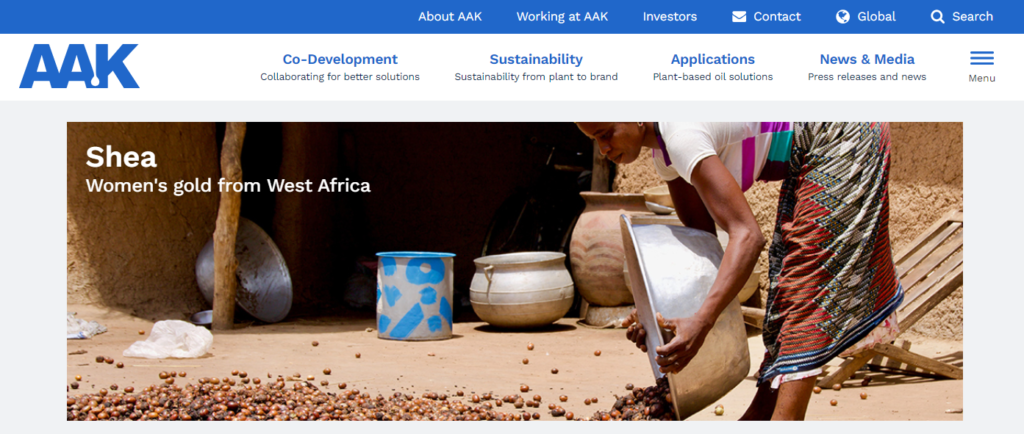
AAK is a global company that sources and exports shea butter from various African countries, including Ghana, Burkina Faso, and Ivory Coast. They have a strong track record of working with local communities and investing in sustainable sourcing practices. AAK has successfully exported shea butter to various international markets, including the US, Europe, and Asia.
Conclusion
Congratulations, you have reached the end of this comprehensive guide on exporting shea butter from Nigeria. By now, you should have a solid understanding of the production process, market dynamics, and export regulations. Armed with this knowledge, you are now ready to take the first step towards exporting shea butter and unlocking its full potential in the global market.
Remember to always prioritize quality control and packaging standards, familiarize yourself with legal and regulatory requirements, and explore financing and marketing strategies to ensure sustainable success. Overcoming challenges in the exportation process can be a daunting task, but armed with the right information and strategies, you can navigate the hurdles and thrive in the shea butter export market.
Thank you for reading, and best of luck in your shea butter export journey!
FAQ
What exactly is shea butter?
Shea butter is a natural fat extracted from the nuts of the shea tree, scientifically known as Vitellaria paradoxa. It is commonly used in cosmetics and skincare products due to its moisturizing and nourishing properties.
How is shea butter produced?
Shea butter is produced through a series of steps. First, the shea nuts are harvested and dried. Then, they are cracked open, roasted, and ground to form a paste. The paste is then kneaded and pressed until the oil separates from the solid components, resulting in a creamy butter.
What are the benefits of shea butter?
Shea butter offers several benefits for the skin and hair. It deeply moisturizes the skin, helps soothe dryness and irritation, and promotes elasticity. It can also be used to nourish and condition the hair, leaving it soft and manageable.
Who are the major exporters of shea butter?
There are several countries that export shea butter, including Nigeria, Ghana, Burkina Faso, and Ivory Coast. These countries have a rich shea butter industry and are known for producing high-quality shea butter.
What is the demand for shea butter?
The demand for shea butter has been steadily increasing, driven by its growing popularity in the cosmetics and skincare industry. With its numerous benefits and natural properties, shea butter is sought after by consumers worldwide.
How can I export shea butter from Nigeria?
To export shea butter from Nigeria, it is important to familiarize yourself with the legal and regulatory requirements. This includes obtaining the necessary permits, complying with export documentation procedures, and ensuring adherence to quality control standards.
How can I find international buyers for shea butter?
There are various ways to find international buyers for shea butter. You can attend trade fairs and exhibitions, leverage online platforms and directories, reach out to importers and distributors, and collaborate with trade organizations and government agencies to expand your network.
What packaging options are suitable for shea butter export?
When packaging shea butter for export, it is important to use materials that are sturdy and can protect the product during transit. Common packaging options include jars, tubs, or tins made of food-grade plastic or aluminum. It is also advisable to include proper labeling and comply with any packaging regulations of the destination country.
What are the shipping considerations for shea butter export?
When shipping shea butter, it is essential to choose a reliable shipping partner experienced in handling cosmetic products. Consider factors such as transportation modes, transit time, temperature control if necessary, and insurance coverage to ensure that the shea butter reaches its destination safely and in optimal condition.
Are there any financing options available for shea butter exporters?
Yes, there are financing options available for shea butter exporters. These include government assistance programs, export financing institutions, and commercial banks that offer export financing. It is advisable to research and explore these options to determine the most suitable financing solution for your export business.
How can I overcome challenges in shea butter exportation?
Overcoming challenges in shea butter exportation requires careful planning and strategy. This may include staying updated on export regulations, building strong relationships with suppliers and buyers, conducting market research, and continuously improving product quality and packaging. It is also beneficial to seek guidance from industry experts or organizations that specialize in shea butter export.


